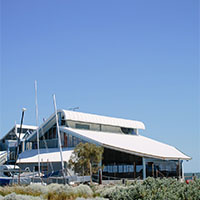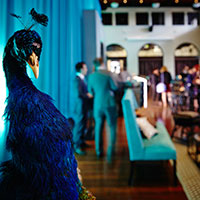

By Nithya Nagarajan.
When it comes to event and conference management, communication skills can be the difference between success and failure. Such skills are essential for engaging stakeholders, arranging logistics, curating content, and managing the overall delivery of the day.
There are particular methods directly related to actor’s training that events professionals can use to overcome communication challenges that they may face in day-to-day scenarios.
Planning: Tailor your message for your audience
When you’re running events, you invariably find yourself in time-critical situations. Every face-to-face, phone or email interaction not only needs to be efficient but also effective in achieving your vision. Often, you are coordinating with venues, caterers, service providers, marketers and speakers. Each stakeholder has different communication needs, so it is important to tailor your message.
Russian theatre practitioner, Konstantin Stanislavski, established six principles of thinking through context in a play. These ask the actor to consider the ‘Given Circumstances’: who, what, where, when, why and how in relation to their character in each scene. The character will interact with different people in a variety of circumstances which can influence their behaviour and communication style.
In planning a conference, an event organiser can apply Stanislavski’s framework to think through communication with different stakeholders. Ask yourself:
1. WHO: Who are my audience and who am I to them?
Anticipate how the recipient will interpret your communication so you can tweak the language and detail of the communication accordingly.
2. WHAT: What do I want to communicate to the person? What is my objective?
Understand the primary and secondary purposes of the communication. Intent informs content.
3. WHY: Why are you doing this and why should the audience care?
Identify the aim of your message as well as the value for the recipient. What is in it for them? Why is it relevant?
4. WHERE: Where am I?
Establish the location and physical surroundings as it may impact your delivery style.
5. WHEN: When is this taking place?
Gauge the person’s perspective on when it is taking place ahead of time. For example, if they are frequently in meetings in the morning, perhaps ask them for an afternoon meeting instead.
6. HOW: How are you going to convey your message?
Use the answers to all these questions to determine whether your communication needs to be face-to-face or if it can best be delivered via other means such as telephone or email.

Programming: Think about who’s in the room
When it comes to the development of a curatorial framework – one that both excites and inspires – and the scheduling of keynotes, panel presentations, workshops and other experiences that support your conference objectives, you need to think about who is in the room so you can tailor content appropriately.
Often in curating keynotes and panels for a conference, an undue emphasis is placed on content and depth of expertise. Sure, these are key points of consideration, but it is often forgotten that personal presence (i.e. body language and vocal resonance) are essential in achieving impact with an audience. Think of your curation as an audition process where you are the casting director making decisions on actors for lead roles. Consider the energy you want your speaker to bring into the room. Yes, they will know the script, but how will they alter their physical and vocal presence to engage your audience?
Apply your understanding of the people in the room to design sessions that have a clear intention. Think through what/how you want your audience to feel as a result of the session, rather than just having them be informed on a particular subject matter. For example, I want my audience to feel (cue adjective: inspired, encouraged, excited, challenged, confronted) at the end of the session.
Use this physical and vocal checklist to help determine whether they may need some training or rehearsal before they deliver their session. Remember, energy has a direct correlation on impact:
· are they able to maintain effective eye contact?
· are they grounded in their demeanour?
· are they able to hold their own on stage?
· do they alter their pitch in delivery?
· do they vary the texture of their text?
· do they have control over their pacing?
Networking: Build rapport with your stakeholders
You are the ‘glue’ in an event management situation, so you need to have smooth working relationships and the ability to engage a range of different people. Working the room comes down to building rapport. A common assumption is that networking is the sole domain of extroverts, rather than introverts. This is a misconception as introverts are often better listeners and engage in deeper conversations.
‘Status’ is a powerful force in networking dynamics. Actors use this technique in improvisation all the time to explore the power difference in the relationship between two characters. Status is linked to how you perceive the other person, and how you perceive their perception of you. In short, you endow your conversational partner with a particular status. It is good practice to mentally clock the attributes that you have assigned to your conversation partner so that you can be aware of how it impacts dynamics and also how you can adapt your communication style for different people.
Nithya Nagarajan is an experienced arts manager and creative producer, cultural researcher and arts practitioner. She is NIDA Corporate’s Client Engagement Manager at the National Institute of Dramatic Art (NIDA), and works in executive education to facilitate programs in public speaking, presentation design and delivery, and leadership based on NIDA’s actor training toolkit.





